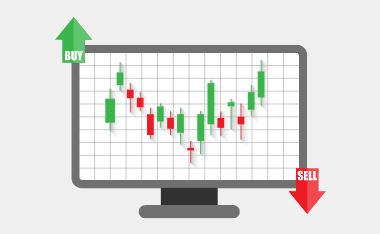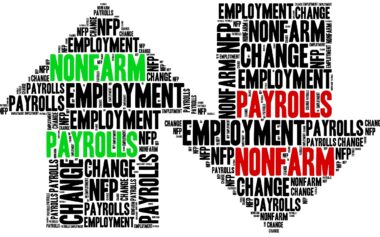What are the Best Days to Trade Forex?

The forex market is open to Retail Traders 24 hours for 5 ½ days a week and is closed to retail trade on weekends.
This means traders have more than enough trading hours every week to find opportunities to make profitable trades on the forex market.
This then begs the question…
Why is it necessary to know the best days for forex trading?
Ordinarily, traders can earn profits at any time in the forex market once it is open but then in terms of volume and opportunities, generally speaking, not all days are equal in opportunity.
Usually, novice forex traders jump straight into trading and as a result, they monitor several different economic calendars while trading vigorously and aggressively.
They watch the release of every bit of data, while often also monitoring the market 24 hours a day, five days a week.
However, this is the kind of approach that frequently depletes the reserves of the “newbie” trader very quickly, resulting in lack of confidence and thus discouraging even the most persistent of traders from continuing their pursuit of forex trading profits.
Since the forex market operates during the regular business hours of four different parts of the world along with their respective time zones, this can leave such traders trading all day and night.
This is too much, even for the experienced trader, let alone the inexperienced new trader, trying to “make their mark” in the Market.
What is the solution that will save these traders from having to trade all day and night, pouring over dozens of charts, attempting to glean a profitable trade from every slight movement just to justify they time and money they’ve invested?
The Importance of Choosing When You Trade
An often-overlooked answer is for traders to gain a clearer understanding of the best market hours where they can focus on trades using their particular trading style or method and goals.
This way, they will have a better chance of earning profits whilst adhering to a reasonable, workable trading schedule.
In this article, we will shed some light on how to identify the “best” trading days to trade the forex market.
The forex market is mostly driven by institutional traders that work during business hours in their respective countries. This means the hours of operation will differ slightly from one country to another.
We will now examine the hours and days of operation for the major forex markets in the world and see how they impact on choosing which day is the best to trade forex for you.
The London Market
One of the most important geographical locations in forex is based in the financial district of the capital city of United Kingdom, London.
The Great British Pound (GBP) is the dominant currency in the global currency markets with decisions made by institutional traders following the information provided by the British government departments being the main factor that drives its price.
Trades coming out of London account for approximately 43% of worldwide forex trading.
The market is open between 9.00am and 5.00pm Greenwich Mean Time (GMT). In Australia (depending on your local times zone), this occurs in the early evening. For more information about when are the best TIMES to Trade Forex in Australia, please visit our article HERE.
London is the central trading capital of the world and subsequently has a major impact on currency fluctuations. This is because Britain’s central bank, The Bank of England (BoE), headquartered in London, is responsible for setting UK interest rates as well as controlling the monetary policy of the GBP.
Another vital consideration is that typically, strong global forex trends in Technical Indicators, Trend and Pivot Point levels are usually based off movement in the London Market.
The East Coast of Australia Market (Sydney & Melbourne)
The 3 most influential cities in the Australian Market are Sydney, Canberra and Melbourne.
The Reserve Band of Australia (RBA) determines the Australian Economy Base Bank Interest Rates, as well as the Consumer Price Index (CPI). These are two factors in the value of the Australian Dollar (AUD)
These economic hubs share a time zone: Australian Eastern Standard Time (AEST) in the late Autumn, Winter and early Spring and Australian Eastern Daylight Savings Time (AEDST) in the late Spring, Summer and early Autumn months.
While it is the “smallest” of the four mega-markets, the “Aussie” is one of the top 5 traded currency pairs in the world, showing a large flurry of activity during the Australian day time session (the late evening, early morning in the UK and the US)
This trading zone is also the first to open each week: Monday in Australia being around 10 hours ahead of the London Market (depending on the overlap in Daylight Saving).
The open of the Australian Market on a Monday morning can be unpredictable, because retail traders and financial institutions are typically reorganising their trading positions after a long pause since the US market closed on Friday.
This gap in trading between Friday US close and Monday Australian Open, and the fact that, while the Australian Market is open, very few institutional traders are trading in both the US and the UK, means that, for most Retail Traders, Monday trading can be challenging.
Trading on Mondays is generally best focused on trading the AUDUSD (the information driving the market is being released by the RBA and Australian Government departments and therefore would be more likely to affect the AUDUSD) during the or the GBPUSD (as the largest volume Market in forex, Institutional Traders in Australia could be looking for “a piece of the GBPUSD action” in the Sydney and Melbourne time zone.
Most Australian-based Traders find that they have more options on the days where there has been recent trading activity coming out of the US (Tuesday, Wednesday, Thursday and Friday local)
The Tokyo Market
The capital City of Japan is open between 9.00am and 5.00pm Japan Standard Time (JST). Japan does not observe Daylight Saving, so for traders in Melbourne and Sydney, Japan will be 1 hour behind during AEST and 2 hours behind during AEDT.
Japan is recognised as the first Asian trading center to open. It also accounts for the largest portion of Asian trading, slightly ahead of Hong Kong and Singapore.
There are specific currency pairs that tend to have a significant amount of action in this market and they include USDJPY, GBPUSD, and GBPJPY. In particular, the USDJPY is the one to watch, due to the heavy influence exerted by the Bank of Japan (the central bank of Japan) over the market, especially when the Tokyo market is the only one open out of the Japanese, UK and US markets.
The smaller typical price trading range shown daily on the USDJPY, makes it usually one of the least volatile pairs to trade. Similarly to the AUDUSD, usually the market moves more consistently when there has been recent activity on the US Market.
The New York Market
The New York market is open from 8 AM to 5 PM EST (late evening and early morning in Australia) and it is located on the East Coast of The United States of America.
Typically, the New York Market is the second-largest forex market in the world with a lot of investors heavily interested in and observing this market due to the involvement of the U.S. dollar in 90% of all forex trades.
The New York Stock Exchange (NYSE) is a leading force in the American currency, with movements in major stocks on the NYSE potentially having an instant and significant effect on the dollar.
This is because US-based companies finalizing foreign acquisitions and the conversion of capital into the US dollar can make any pair including the US Dollar gain or lose value immediately.
As the USD is the highest volume traded currency and the major currency pairs traded include the USD, this has a ripple effect across most of the Market.
The Three Best Days of the Week for Trading Forex
Research has shown that the best days of the week to trade for Traders based in Australia are Tuesday, Wednesday, and Thursday.
Why these three days?
Just like everyone, Australians love our public holidays and most of the public holidays around the world fall on a Monday (so we can enjoy our long weekend and delay dragging ourselves into work for another day!)
In addition, as discussed in looking at the Australian and Japanese Market above, the Monday Morning AUDUSD Session occurs a full day and a half after the close of the New York Market. This means there is a significantly reduced flow on effect from the latest trading on the London and New York Markets. For them, it’s been two days since they last traded and let’s face it, who does their best work on a Friday afternoon?
And looking at Friday, well as we’ve just seen, Friday can be hit and miss as well. Some public holidays occur on a Friday (the 2nd most typical day for a public holiday) and also several significant Financial Announcements occur on Fridays (US Non Farm Payroll being the “grandaddy”) causing a lot of uncontrolled volatility, which can play havoc with a technical based trading system, looking for predictable, reliable market movements)
So the Aussie morning session on Friday can be good for the AUDUSD, but the evening session where the GBPUSD and EURUSD can be volatile.
The remaining days (Tuesday, Wednesday and Thursday) are usually regarded as the three best trading days because they witness the most consistent, predictable activity when it comes to forex trading.
These 3 days have shown to be historically when traders move currency pairs the most and consistent price cycles, through the expected trading range, thus making them the “best” days for traders to get in on the action.
These busiest days of the week represent the best periods for traders to execute forex trades as they will have a better chance of getting the best return for their investment.
As much as there are best days for trading forex, there are days that traders should take a break from trading as the chances to be profitable on such days are slim.
One of the strongest “lifestyle” aspects of trading forex is that Saturday and Sunday are all yours, as the market is closed to retail trade on Saturdays and Sundays.
If you focus on the Tuesday, Wednesday and Thursday markets, where you are generally better positioned to find stronger, more profitable trades, then you’ll also get a 4 day weekend…
The Best Hours for Forex Trading
We’ve looked at the best three days of the week for forex trading, and there are hours within those days that are optimal for trading and we suggest that traders need to be aware of them.
Not all hours of the day offer equal trading opportunities because if the market is not very active, it is not beneficial to trade during such periods. Therefore, it is better to look out for periods when there are more than one of the four markets open at the same time as this will create a stronger trading environment which is an indication that there is likely to be more substantial controlled fluctuation in currency pairs.
This will enable you to maximize the available trading opportunities on the days that you choose to trade.
Several factors should be considered and so we have written an article on the best times to trade forex.
You can read this article HERE.
The Impact of Major News Releases on Forex Markets
While it is important to understand the four major forex markets and their hours of operation along with their overlaps to better organise your trading schedule to maximise productivity, there another influencing factor that should not be ignored is the impact of major news releases.
A significant news release can dramatically change a usually slow trading period.
Whenever there is a major impact announcement that concerns economic data for a particular currency, particularly when the result is against the predicted forecast, it can cause a currency to rapidly gain or lose value within a very short period of time.
Although there are dozens of economic releases each weekday across all time zones which affect all currencies, traders do not need to be aware of them all.
You should prioritise the news releases that need to be observed versus those that have to be monitored in the currency pairs that you choose to trade.
Here are some examples of significant news events that traders need to be aware of:
CPI data: measures inflation and can influence central bank policies, as it shows the increase in cost of goods to the consumer.
Consumer spending is a crucial factor for economic growth in the United States and around the world, showing people have more discretionary income to spend.
Interest rates: the central bank for the currency determines the base interest rate charged by banks on mortgages. Interest rates increasing generally shows a stronger overall economy (even if it makes it harder for people to pay their mortgage) and encourages international investment in that country’s economy.
The Final Word on What Are the Best Days to Trade Forex
For the most part, most retail traders don’t pay enough attention to the days they choose to trade.
Without understanding the impact of which days you trade has on the potential to actually find and execute a profitable trade, you will just take random stabs at the market, hoping to find a trade that will produce a profit for you.
To build a healthy, productive and consistently profitable trading business, you should focus your efforts and trade on days when the market is more likely to provide the potential opportunities that will enable the trader to make profits using your preferred trading method.
Just because a trader is available for trading does not mean the market will have a trading opportunity for them… It is up to you as the trader to identify days when there will be the strongest trading opportunities.
We hope that this article has given you food for thought and that following the information provided (as long as it is consistent with your trading method, goals and personal circumstances {this is up to you as a trader to determine}) will improve your approach and put more money in your pocket more often.
More Information
For more trading term general definitions, visit our A to Z of Forex Trading
To look at these concepts in action, please visit our sister site, Latest Forex Rates
What to Do Next
For information and to see how our LIFT Investor Trader Program could potentially help you build a full time income from trading in your spare time, BOOK YOUR FREE STRATEGY SESSION HERE to speak with our Lead Trading Coach.
Disclaimer
The information, strategies, techniques and approaches discussed in this article are for general information purposes only. The Trading Coach International does not necessarily use, promote nor recommend any strategies discussed in this article. The information in this article may not be suitable for your personal financial circumstances and you should seek independent qualified financial advice before implementing any financial strategy. The Trading Coach International is not a financial advisor and does not have AFS registration.


















